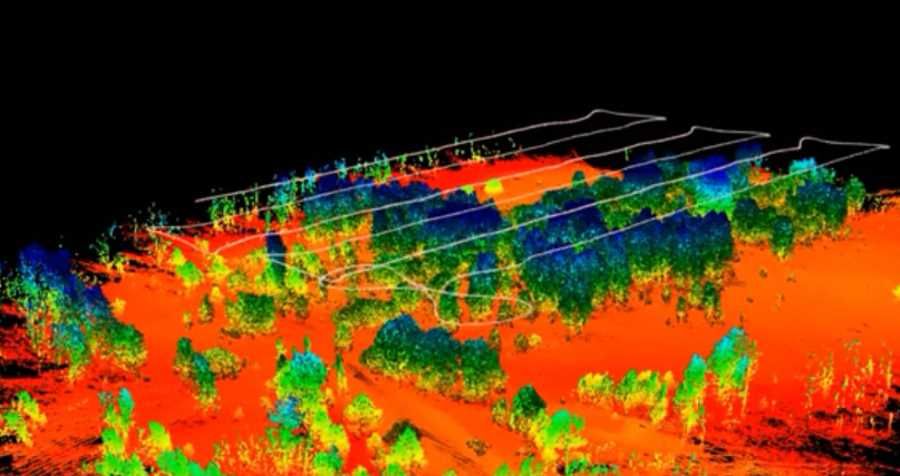Mapping the Red Forest in Chernobyl
British scientists using drones have examined one of the most contaminated areas in the world – the Red Forest located near the Chernobyl power plant complex. Survey reveals clusters of radioactivity not shown on official maps.
The Red Forest gets its name from the color of the dead pine trees, whichore absorbed huge doses of radiation during the Chernobyl disaster. In April 1986, an explosion occurred in the nuclear reactor of power unit No. 4 at the Chernobyl plant. During the experimental shutdown of the reactor, the cooling circuit failed. The explosion caused a fire, whichory lasted nine days and whichory ejected huge amounts of material into the atmosphereoin radioactive.
The explosion at the power plant led to the contamination of more than 100,000. kilometeroin the square area. Areas located in Belarus suffered the most, but the contamination reached roAlso over Scandinavia and also over Poland. From the zone surrounding the power plant, all residents were displacedow.
33 years after the tragic events, the interdisciplinary teamoł scientistsow from the University of Bristol mapped the level of theoin radioactivity in the so-called. Exclusion Zone, a closed area most affected by the disaster. Teamoł used two types of droneow to map 15 kilometeroIn square footage of the area. Researchers used a LIDAR system to produce trojdimensional map of the area. The radiation levels were measured with a gamma spectrometer.
The survey took place last month, and over the course of 10 days, scientists made 50 flightsoin drones over areas of interest to them. They started with the village of Burakowka, where low- and intermediate-level radioactive waste is stored. These are primarily vehicles thatowhich were used during the cleanup operationsoin the disaster. Only then did they go to the epicenter of the zone.
Scientists particularolnie interested in the Red Forest. This is an area of about 10 kilometersoin square, ktory received the highest radiation doses after the fallout of radioactive dust, whichory escaped from the power plant. The site remains one of the most contaminated places in the world to this day.
The research essentially confirmed the current understanding of radiation distribution in the Red Forest, but much more detailedomore than before. In addition, it was discovered that radioactivity levels are nieroevenly distributed. While the radiation has subsided in someohe areas, others maintain dangerously high levels of contamination.
One such site is located a few kilometersoin the south of the Red Forest. This is a site where prowas dealt with the contaminated soil during the cleanup operation, he saidoin the catastrophe. Radiation is increasing rapidly in the area. The intensity of the radiation may be unexpected, but its location makes sense given the site’s role in separating contaminated soil.
– This spent nuclear fuel scattered on the floor of the facility gives a very high dose of radiation. About 1.2 millisievertsow per hour. This means that a year’s worth of radiation can be received there in a few hours – said Prof. Tom Scott of the University of Bristol.
The surveys provided Ukrainian authorities with up-to-date information on the sites with the highest contamination. But researchers are planning in a few months wrocial to conduct mapping of the rest of the areaoin the Exclusion Zone.
The authorities, knowing exactly whichore areas will remain dangerous for decades to come, and in ktohe levels of radioactivity have dropped, will be able to make efforts to reclaim the area. – Some of the radioactivity has quieted down, so the ogolny level has dropped significantly. However, there are some radioisotopes, whichore have long periods of pol permeability, and so they will be there for a very long time – added Scott.
